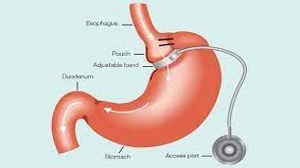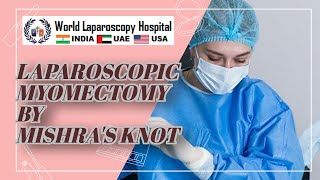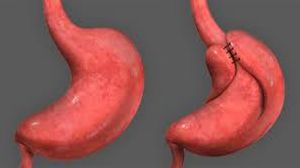Laparoscopic Meckel's Diverticulectomy: Effective Management for Symptomatic Meckel's Diverticula
Add to
Share
777 views
Report
1 year ago
Description
Introduction: Meckel's diverticulum is a congenital abnormality that occurs in the small intestine, specifically the ileum. It is a remnant of the embryonic vitelline duct, which normally disappears during fetal development. Meckel's diverticulum is present in approximately 2% to 4% of the population, but it is often asymptomatic and requires no treatment. However, in some cases, it can become symptomatic, causing complications such as bleeding, intestinal obstruction, or inflammation. Laparoscopic Meckel's diverticulectomy has emerged as an effective surgical approach for managing symptomatic Meckel's diverticula, offering numerous benefits over traditional open surgery. This comprehensive article will explore the details of laparoscopic Meckel's diverticulectomy, its advantages, and its role in effectively managing symptomatic Meckel's diverticula. Procedure: Laparoscopic Meckel's diverticulectomy is performed under general anesthesia. The procedure involves making a few small incisions in the abdomen through which specialized instruments and a laparoscope—a thin, illuminated camera—are inserted. The laparoscope provides a magnified view of the surgical site, enabling the surgeon to visualize the Meckel's diverticulum, adjacent structures, and any associated abnormalities. The surgeon carefully identifies and isolates the Meckel's diverticulum, which typically presents as a pouch-like protrusion from the ileum. The blood supply to the diverticulum is meticulously ligated and divided to prevent bleeding. The diverticulum is then resected, and the healthy edges of the ileum are sutured or stapled back together to restore intestinal continuity. Benefits of Laparoscopic Meckel's Diverticulectomy: Minimally invasive approach: Laparoscopic Meckel's diverticulectomy offers several advantages over traditional open surgery. The smaller incisions result in less tissue trauma, reduced postoperative pain, and faster recovery times. Additionally, the minimally invasive nature of the procedure leads to shorter hospital stays and decreased risk of surgical site infections. Enhanced visualization and precision: The laparoscopic approach provides the surgeon with a high-definition, magnified view of the surgical site, allowing for precise identification and removal of the Meckel's diverticulum. This results in improved surgical outcomes and reduced risks associated with incomplete resection. Reduced complications: Laparoscopic Meckel's diverticulectomy has been associated with lower rates of complications such as wound infections, wound dehiscence, and postoperative hernias compared to open surgery. The meticulous technique and improved visualization contribute to a decreased risk of inadvertent damage to surrounding structures. Management of Symptomatic Meckel's Diverticula: Symptomatic Meckel's diverticula require surgical intervention to alleviate symptoms and prevent potential complications. Laparoscopic Meckel's diverticulectomy has emerged as the preferred surgical approach for managing symptomatic cases due to its numerous benefits. Symptoms that may indicate the need for surgical intervention include gastrointestinal bleeding, abdominal pain, intestinal obstruction, or inflammation. The surgical decision is made based on the severity of symptoms, patient's age and general health, and the presence of associated complications. Laparoscopic Meckel's diverticulectomy provides an effective solution by completely removing the diverticulum, eliminating the source of symptoms and reducing the risk of future complications. It offers a shorter recovery period, minimal scarring, and improved cosmetic outcomes compared to open surgery. Postoperative care and Postoperative care and recovery following laparoscopic Meckel's diverticulectomy are relatively straightforward. Patients typically experience mild discomfort, which can be managed with pain medication prescribed by the surgeon. They are encouraged to resume a regular diet gradually and engage in light physical activity as tolerated. It is essential for patients to follow the postoperative instructions provided by their surgeon, including proper wound care, avoiding strenuous activities, and attending scheduled follow-up appointments. These follow-up visits allow the surgeon to assess the healing process, monitor for any signs of complications, and address any concerns or questions the patient may have. Complications associated with laparoscopic Meckel's diverticulectomy are rare but can include infection, bleeding, or leakage at the site of the anastomosis. Patients should be vigilant for signs of infection, such as increased pain, redness, swelling, or fever, and promptly report them to their healthcare provider if observed. Conclusion: Laparoscopic Meckel's diverticulectomy is an effective and minimally invasive surgical approach for managing symptomatic Meckel's diverticula. This procedure offers numerous benefits, including smaller incisions, reduced postoperative pain, faster recovery times, and improved cosmetic outcomes compared to open surgery. By completely removing the diverticulum, laparoscopic Meckel's diverticulectomy alleviates symptoms and reduces the risk of future complications. Individualized patient evaluation and appropriate surgical decision-making are essential to determine the need for intervention in symptomatic Meckel's diverticula. Consulting with a skilled surgeon experienced in laparoscopic techniques ensures optimal outcomes and patient satisfaction. Overall, laparoscopic Meckel's diverticulectomy represents a significant advancement in the management of symptomatic Meckel's diverticula, providing a safe and effective surgical solution that minimizes postoperative discomfort and facilitates a faster return to normal activities.
Similar Videos






